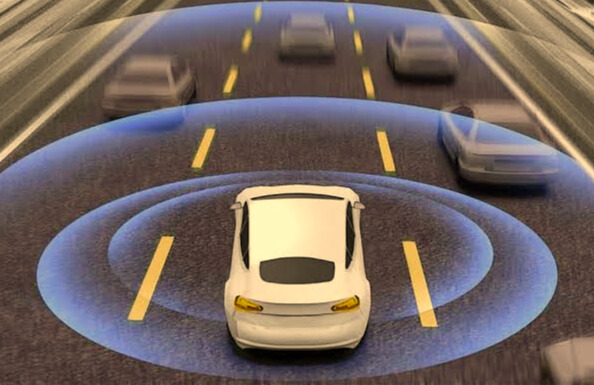Self driving cars (AVs) are the future of smart mobility.
Self driving cars (AV) are the future of smart mobility
Autonomous vehicles (AV), also called self-driving cars, are a new technology that is changing the way people get around the world. These cars can drive themselves with little or no help from people. They do this by employing a combination of sensors, AI, machine learning, and analyzing data in real time.
AVs are a big step forward in how we transport people and things securely, rapidly, and in a way that is good for the environment in a world that is changing more and more because of new technology.
What are the tasks of self-driving cars?
Self-driving cars and trucks are vehicles that can drive themselves and see what’s around them. These cars can find things, read traffic signs, follow GPS directions, and make judgments all by themselves in the blink of an eye.
They use a number of different technologies: Self driving cars
Cameras that let you see things
You can find out how far away something is and how fast it is moving by using radar and LiDAR.
Ultrasonic sensors that help you find things up close
Use GPS and HD maps to get where you need to go.
Figuring out how to drive using AI and deep learning
The Technology That Makes AVs Work
What is AI?
AI is the component of the brain that decides what to do. It receives data from all the sensors and utilizes it to make safe and smart choices about how to drive.
Algorithms for machine learning: Self driving cars
The car grows better over time because it learns from the things it sees while driving.
LiDAR and Radar Sensors: Self driving cars
These help the automobile make 3D maps of its environment, which helps it find people, things, and road signs.
The Global Positioning System (GPS) is what it stands for.
It shows you where you are right now, which is helpful for making travel plans.
V2X is when vehicles talk to one other and everything else.
AVs talk to traffic signals, other cars, and the road to make it easier to go about and stay safe.
Leve ls of Automation (SAEStandar)
LevelAutomationDescription
0 No Automation; the Driver Does Everything
1. Help for drivers who are speeding up or steering (like adaptive cruise control)
2. The steering and acceleration are only partially automated, so the driver needs to keep an eye on it.
3. Conditional automation: The car drives itself, but people have to be ready to take over if something goes wrong.
4. Very High Automation There don’t need to be any humans in some places, like cities.
Most of the automobiles that drive themselves on the road right now are between Level 2 and Level 4.
The advantages of self-driving cars
More safety on the road: Self driving cars
More than 90% of car accidents are caused by people making mistakes. AVs can help prevent a lot of crashes by stopping people from driving while drunk or preoccupied.
More flexibility to move: Self driving cars
AVs can give older individuals, persons with impairments, and people who don’t drive more freedom and independence.
Fewer cars on the road: Self driving cars
AVs may talk to each other and the roadways to keep traffic moving and avoid traffic congestion.
Things that are good for the environment:
Electric AVs and smoother driving patterns use less petrol and pollute the air less.
There is more work to be done: AVs
When the automobile is in autonomous mode, passengers can read, work, or sleep.
⚠️ Problems and worries
There are a lot of issues that need to be fixed, even while there is hope:
Safety is vital when things get tough: AVs
Self-driving cars need to be able to deal with bad weather, construction sites, and people who act strangely.
Risks to cybersecurity: AVs
People who hack into cars that are connected to the internet can steal their information.
Legal and moral problems: AVs
Who is to blame for a crash: the passenger, the software developer, or the manufacturer?
Losing a job: AVs
AVs could mean that you don’t need to hire professional drivers as much, like taxi and truck drivers.
The costs of producing are high:
It costs a lot of money to build the infrastructure and undertake research and development for AVs.
🌎 Examples and Uses in the Real World
Self-driving technology is already being looked into and used in a number of fields:
Waymo, a Google business, offers self-driving taxi services in a number of U.S. locations.
Tesla Autopilot and Full Self-Driving (FSD) are advanced technologies that make driving easier.
Cruise (by GM): You can summon a ride in San Francisco without a driver.
Amazon Scout and Nuro are small delivery robots that help with the last mile of transportation.
Two firms that use self-driving trucks to carry goods over large distances are TuSimple and Aurora.
What will happen next with AVs?
It won’t happen right away, but eventually, there will be a lot of self-driving automobiles on Earth:
There will be a lot of cars that can drive themselves in cities by 2030
There will be smart cities built that connect AVs to public transportation, electricity grids, and traffic systems.
People will like electric AVs the most because they are clever and good for the environment.
Mobility-as-a-Service (MaaS) models will make it less important to have a car.
Governments, car companies, and huge tech companies are spending billions of dollars on AV research, rules, and infrastructure to make this fantasy come true.
🔮 Last Thoughts
Click to learn more about technology.
It’s not only a dream for the future that individuals will be able to drive themselves; it’s already a huge component of how people get around now. There are problems that need to be fixed, but the benefits in terms of safety, mobility, efficiency, and sustainability are too big to ignore.
Share this content:














1 comment